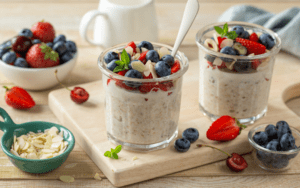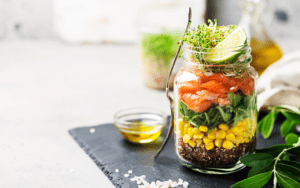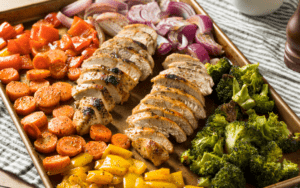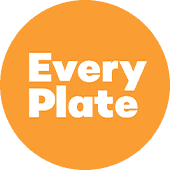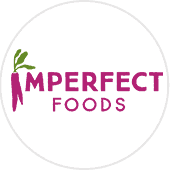Eating healthy isn’t always easy. Tracking macros can feel like a full-time job, and nutritious options often have a higher price tag. Add in food cravings and a packed schedule, and it’s no surprise we end up reaching for whatever’s quick and convenient. Meal prepping can be a game-changer for anyone looking to improve their nutrition and stay on track with their wellness goals.
What is Meal Prepping? 
Meal prepping is the process of planning, preparing, and portioning your meals for the week. Preparing your food in advance will save a lot of time during the work week since the hard part will be complete. The only thing you will have left to do is cook your meal when you are ready to eat. Sometimes, it is just a matter of reheating what you have already cooked. Other times, it could be simply assembling your pre-cooked ingredients. Meal prepping saves you time and takes away the stress of rushing home after a long day to figure out what’s for dinner. It can also encourage you to make healthier choices by planning rather than reaching for an unhealthy quick meal. Today, let’s dive into the reasons for meal prepping and how you can make it part of your week.
Why Meal Prep?
The benefits of meal prepping are endless. All it takes is a little time and effort on one day, and then you can sit back and reap the benefits for the rest of the week. So what are the benefits?
- Time Management: Spend less time cooking on busy days. Instead, you can chop, prep, portion, and cook (most of it) in a single session.
- Healthier Eating: Avoid impulsive unhealthy food choices. Plan your meals, portion your servings, and even count your macros. Doing all of this ahead of time will ensure you get all the proper nutrients your body needs and prevent last-minute binge eating or preparing meals out of convenience.
- Meet your Wellness Goals: Controlling your portions and ingredients boosts your chances of reaching your wellness goals. Whether you’re avoiding synthetic dyes, gluten, dairy, or anything else, being in charge of what goes into your meals makes it easier to hit your weight loss or fitness targets faster.
- Cost-Effectiveness: Save money by reducing food waste and avoiding takeout on the way home from a busy day.
- Stress Reduction: No more scrambling at the last minute—meal planning keeps you organized and ensures your family always has a game plan (and a full plate) for the week ahead.
How to Start
It all sounds fabulous, right? But anything new can feel overwhelming at first. We’re here to say: you can do this! Your family will thank you. Your wallet and sanity will thank you too! Here is a game plan to get started for the upcoming work week:
Plan Your Meals
Decide on recipes for the week and balance nutrients. If you are meal planning for your whole family, get their input on meals, too. Plan meals like fish and fresh salads to be consumed first while they are still fresh. Cooked vegetables, potatoes, and grains can last longer in the refrigerator and can be eaten later in the week!
Make a Grocery List
This is important. Always be prepared before you head to the grocery store. Stick to your list to avoid unnecessary purchases. Deviating from your list could result in food waste and overspending.
Choose Prep Days
Dedicate a few hours to meal prepping one or two days a week. If your work week starts on a Monday, carve a few hours into your Sunday schedule for meal prep.
Batch Cooking
Decide if you want to cook all your vegetables together, as well as your proteins and carbs. Or consider cooking one meal at a time. There is no best method; just figure out your preferred method and stick with it. Consider cooking times and then cook items with similar cooking times together. You may choose to cook everything in advance or leave the protein to cook when you are ready to eat it.
 Storage Solution
Storage Solution
Before you start prepping, be sure to stock up on appropriate containers. Have them washed and ready to use to avoid wasting valuable prep time. For better storage, use stackable containers with airtight lids. Mason jars make great storage solutions for salads, overnight oats, or even single ingredients. Lastly, choose containers that are BPA-free to avoid consuming harmful toxins. BPA-free containers are safer since they can leach into food and may disrupt hormones. Opt for glass, stainless steel, or silicone to reduce exposure and keep your meals chemical-free.
Consider Some Meal Prepping Supplies
Labels—An inexpensive label maker can really help your meal-prepping efforts. In addition to alerting your family what’s for dinner, you can add a date so you know how long your food has been in the fridge. If some family members have dietary concerns or allergies, prepping their food separately with a label can be a big help. Also, labels make us feel super organized, and organization makes any family happy!
Knives – A great set of knives can cut prepping time in half! Get rid of those old knives from your dorm room days, and invest in 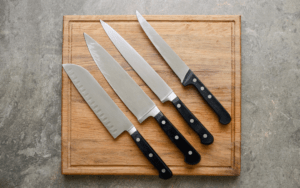
Cutting Boards – Good cutting boards are essential for meal prepping because they protect your knives, keep your workspace sanitary, and help prevent cross-contamination. Durable boards make chopping easier, while non-porous materials like bamboo or plastic are easier to clean. A quality cutting board keeps your kitchen safer and more efficient.
Storage bags – Not everything needs to go into a fancy glass container. Quality storage bags keep your ingredients fresh, organized, and easy to grab during meal prep. Opt for reusable silicone bags or BPA-free freezer bags to cut down on waste and avoid harmful chemicals. Proper storage prevents leaks, freezer burn, and unnecessary food waste.
Appliances – While we love low-maintenance recipes and anything that uses as few dishes as possible, we can’t deny the importance of using the right appliance. Essential appliances make meal prepping faster and more efficient. A food processor speeds up chopping, a slow cooker or Instant Pot handles hands-free cooking, and a blender is great for soups and smoothies. A rice cooker simplifies grains, while a vacuum sealer extends food freshness. The right tools save time, effort, and kitchen chaos!
Now, What to Cook!?
If you weren’t born a chef, consider starting simple. Sheet pan meals or grain bowls can be easily thrown together with little measuring or expertise. Soups can be an easy one-pot meal that pairs well with a salad or loaf of homemade bread. Here are some easy meal prep ideas to keep your week stress-free and delicious:
Breakfast
- Overnight oats – Mix oats, milk, chia seeds, and fruit in jars for grab-and-go mornings.
- Egg muffins – Bake eggs with veggies and cheese in a muffin tin for protein-packed bites.
- Smoothie packs – Pre-portion fruit, greens, and protein powder in freezer bags for quick blending.
Lunch
- Mason jar salads – Layer dressing at the bottom, then grains, protein, and greens to keep it fresh.
- Chicken and veggie bowls – Roast chicken and seasonal veggies and pair with quinoa or rice.
- Wraps or sandwiches – Prep fillings ahead (turkey, hummus, veggies) for easy assembly.
Dinner
- Sheet pan meals – Toss protein and veggies on a baking sheet for easy roasting.
- Slow cooker soups/stews – Make a big batch and portion it for reheating.
- Stir-fry kits – Pre-chop veggies and protein, then store with sauce for quick cooking.
Snacks
- Homemade energy balls – Blend oats, nut butter, and honey for a no-bake snack.
- Veggies and hummus – Pre-cut cucumbers, carrots, and peppers for easy dipping.
- Hard-boiled eggs – A protein-packed snack that’s ready to go.
With a little prep, you’ll have meals ready to grab all week—no last-minute stress!
Tips for Success
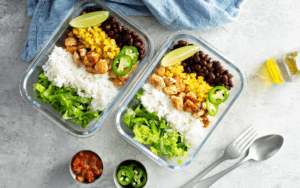
Final Thoughts
Meal prepping is a simple habit that can save you time, money, and stress while keeping your meals healthy and delicious. Whether you’re a beginner or looking to level up your routine, the key is to start small and stay flexible. Need inspiration? A quick online search will give you many meal prep ideas, or better yet, find an accountability partner to prep with for extra motivation! And don’t forget—Knew Health offers resources to help you find discounted organic foods and kitchen supplies, making it easy to stock your kitchen with quality ingredients. Give meal prepping a try, and enjoy the benefits of healthier, hassle-free meals all week long!
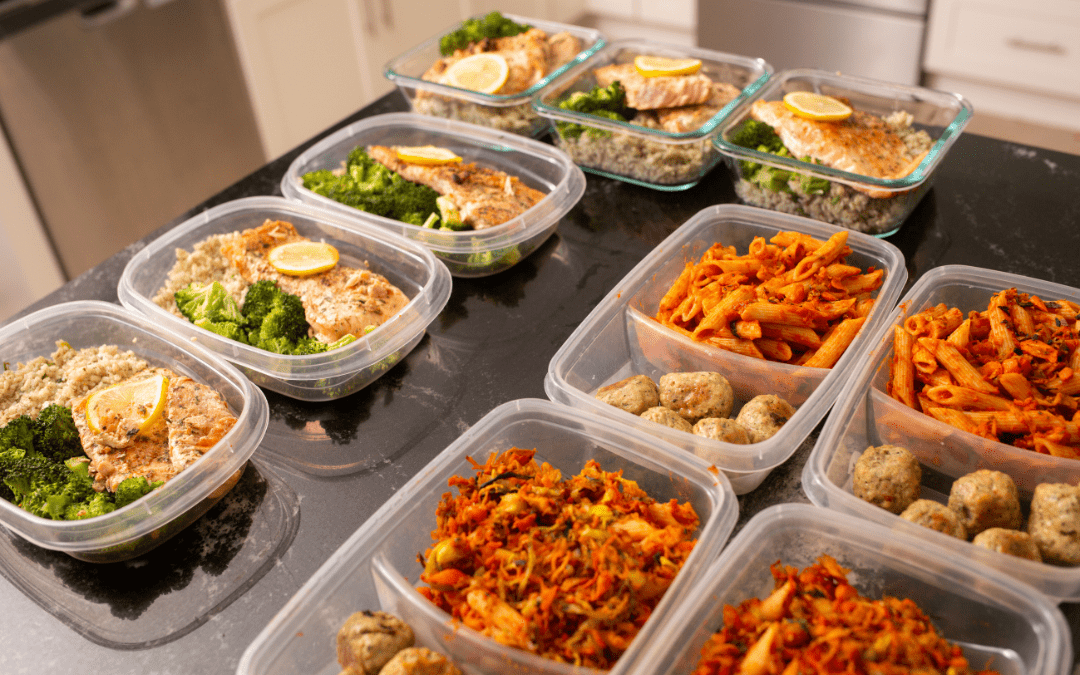
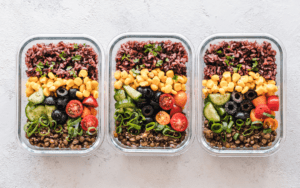
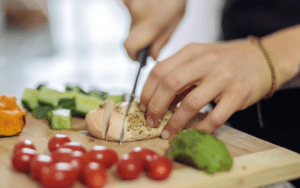
 Storage Solution
Storage Solution